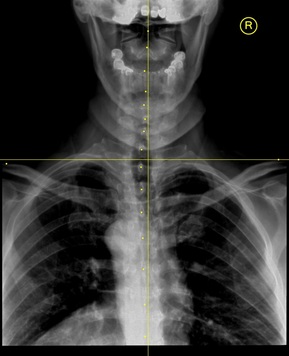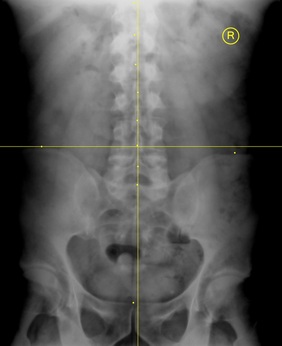- Home
- What is . . .
- Testimonials
- Seminars
- Find a Doctor in Your Area
-
Abstracts
- Skeletal Mechanics Within the Balance State and the Application of The McArthur Method
- Vertebral Subluxation as a Binary Component in the Balance State and the Application of The McArthur Method
- Regional Synchronization Method: Predicting Vertebral Misalignment Patterns to Provide a More Effective Treatment
Seminar Syllabus
7:00 – 7:30 Registration/Introduction – Introduce the speaker and distribute class materials.
Give overview of the seminar.
Understanding the Phenomenon of Balance –
7:30 – 8:30 Derivation and definitions of balance as they pertain to skeletal mechanics.
-Observing balance and understanding it as a binary phenomenon.
-Static versus dynamic observation of balance.
-Observing balance as it occurs in nature. Horizontal and vertical balance examples.
-Correlating structural balance to health.
8:30 – 9:30 Understanding the skeleton’s role in structural balance.
-Understanding subluxation as a binary component within the balance state.
-Understanding that balance protocols are determined by bone classification and position within their respective body region.
-Learning bone classifications that govern balance protocols.
-Understanding how paired and single bones behave in the balance state.
-Learn the three body regions and the balance protocols that govern them.
9:30 – 9:45 ~~~~~~~ Break ~~~~~~~
9:45 – 11:00 Understanding the balance relationship between sacrum and the sternum.
-Dermatome similarities between the upper and lower regions.
-Balance relationships with the upper and lower regions evidence by embryological development.
11:00 – 12:00 Identifying short leg syndromes and their variables.
-Learn how to properly conduct short leg analysis.
-Learn how to chronicle short leg syndromes as they change during the correction process.
-Understanding the palpation procedures “nudging and tugging.”
12:00 – 1:00 ~~~~~~~Lunch Break – 60 minutes ~~~~~~~~~
The McArthur Method - Regional Synchronization -
1:00 – 2:15 Understanding hip and shoulder involvement in the balance state.
-Correlating hip and shoulder heights to leg checks.
2:15 – 3:30 Solidifying hip and shoulder involvement through visual posture observation.
-Combining hip and shoulder observations and leg check observation.
3:30 – 4:30 X-ray analysis as it relates to short leg syndromes.
-Combining xray findings with leg check observation.
4:30 – 4:45 ~~~~~~~ Break ~~~~~~~
4:45 – 5:45 Cover the corrective procedures.
-Looking at actual case studies involving regional synchronization.
-Review and reinforce leg checks, postural observations on xray and visually in a clinic setting.
-Incorporating clinical charting and treatment protocols in a clinic setting.
Demonstration of the application of the McArthur Method-
5:45 – 6:30 Bringing all aspects of this course to a workable model that can be immediately used in the office.
-Includes recognizing balance patterns by means of xray and visual posture analysis.
-Use of accurate leg check and their relationship and application in the treatment process.
6:30 – 7:30 Using palpation, primarily “nudging and tugging” in the treatment process.
-Incorporating support taping to the treatment process.
Course review and conclusion –
7:30 – 8:30 Review and finalize the main topics from the lecture.
-Establishing testimonials.
-Knowing when and how to set up testimonials for confidence building, promotional uses and a source for research material.
Those states not requiring 12 full in class hours will shorten this syllabus by one hour.
Total of 12 seminar hours which includes 3 hours of risk management and 6 hours for CAs for Mississippi.
Reminder: Remember to bring AP upper & lower spine x-rays of yourself for the practical portion of the seminar. Also bring any adjustment instruments you may have.
Give overview of the seminar.
Understanding the Phenomenon of Balance –
7:30 – 8:30 Derivation and definitions of balance as they pertain to skeletal mechanics.
-Observing balance and understanding it as a binary phenomenon.
-Static versus dynamic observation of balance.
-Observing balance as it occurs in nature. Horizontal and vertical balance examples.
-Correlating structural balance to health.
8:30 – 9:30 Understanding the skeleton’s role in structural balance.
-Understanding subluxation as a binary component within the balance state.
-Understanding that balance protocols are determined by bone classification and position within their respective body region.
-Learning bone classifications that govern balance protocols.
-Understanding how paired and single bones behave in the balance state.
-Learn the three body regions and the balance protocols that govern them.
9:30 – 9:45 ~~~~~~~ Break ~~~~~~~
9:45 – 11:00 Understanding the balance relationship between sacrum and the sternum.
-Dermatome similarities between the upper and lower regions.
-Balance relationships with the upper and lower regions evidence by embryological development.
11:00 – 12:00 Identifying short leg syndromes and their variables.
-Learn how to properly conduct short leg analysis.
-Learn how to chronicle short leg syndromes as they change during the correction process.
-Understanding the palpation procedures “nudging and tugging.”
12:00 – 1:00 ~~~~~~~Lunch Break – 60 minutes ~~~~~~~~~
The McArthur Method - Regional Synchronization -
1:00 – 2:15 Understanding hip and shoulder involvement in the balance state.
-Correlating hip and shoulder heights to leg checks.
2:15 – 3:30 Solidifying hip and shoulder involvement through visual posture observation.
-Combining hip and shoulder observations and leg check observation.
3:30 – 4:30 X-ray analysis as it relates to short leg syndromes.
-Combining xray findings with leg check observation.
4:30 – 4:45 ~~~~~~~ Break ~~~~~~~
4:45 – 5:45 Cover the corrective procedures.
-Looking at actual case studies involving regional synchronization.
-Review and reinforce leg checks, postural observations on xray and visually in a clinic setting.
-Incorporating clinical charting and treatment protocols in a clinic setting.
Demonstration of the application of the McArthur Method-
5:45 – 6:30 Bringing all aspects of this course to a workable model that can be immediately used in the office.
-Includes recognizing balance patterns by means of xray and visual posture analysis.
-Use of accurate leg check and their relationship and application in the treatment process.
6:30 – 7:30 Using palpation, primarily “nudging and tugging” in the treatment process.
-Incorporating support taping to the treatment process.
Course review and conclusion –
7:30 – 8:30 Review and finalize the main topics from the lecture.
-Establishing testimonials.
-Knowing when and how to set up testimonials for confidence building, promotional uses and a source for research material.
Those states not requiring 12 full in class hours will shorten this syllabus by one hour.
Total of 12 seminar hours which includes 3 hours of risk management and 6 hours for CAs for Mississippi.
Reminder: Remember to bring AP upper & lower spine x-rays of yourself for the practical portion of the seminar. Also bring any adjustment instruments you may have.


